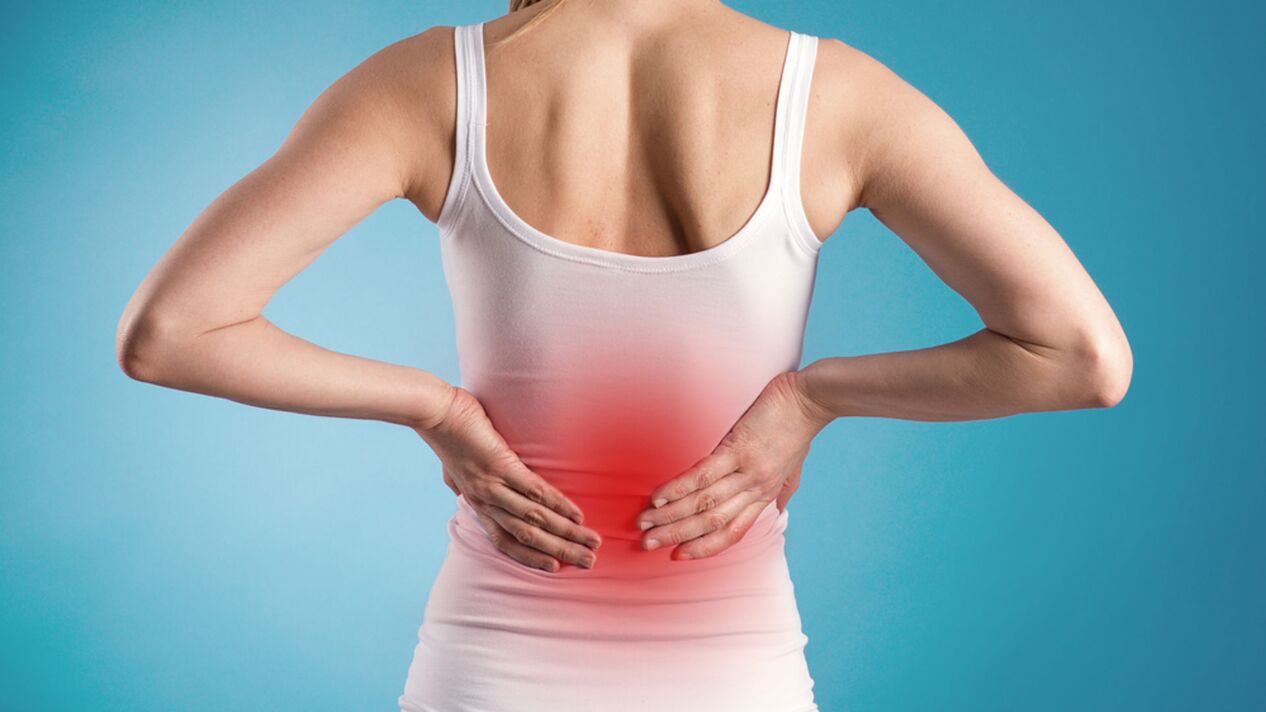
About disease
Types of back pain
- Acute - lasts up to 6 weeks;
- Subacute – lasting more than 6 weeks;
- Chronic - bothering a person for more than 3 months.
- Compression of neural structures;
- Inflammatory damage to the spinal joints;
- Instability of different segments of the spine (the lumbar region is most susceptible);
- Muscle and fascial injuries.
- Discogenic – Caused by damage to the intervertebral disc;
- Radicular – caused by compression of the nerve roots of the spinal cord that pass through the intervertebral foramen;
- Myofascial – Pain that occurs due to damage to the muscles surrounding the spine and/or the connective tissue membrane that covers them;
- Joints – Pain caused by osteoarthritis of the facet joints.
Back pain symptoms
- numbness in the arms or legs;
- decreased muscle tone;
- Pathological sensitivity: crawling sensation, burning sensation, etc. ;
- Pelvic organ dysfunction: urinary incontinence, gas incontinence, fecal incontinence, male intimate diseases, etc.
The most common causes of back pain
- Herniated discs, spinal stenosis (narrowing), various forms of osteochondrosis - degenerative damage to the intervertebral joints (spondyloarthropathy), increased mobility of spinal segments (spinal instability) and sliding of the vertebrae (degenerative spondylolisthesis));
- Simple spinal trauma;
- Pathological fractures of the vertebrae occurring in the context of osteoporosis (a slight external impact is enough to destroy the integrity of the bone);
- Invasive hemangioma - a tumor that originates from blood vessels and can compress nearby tissue;
- Primary and metastatic tumors affecting the spine.
Diagnosis of back pain
- Computed tomography of the spine. In the clinic, the examination is performed using high-precision equipment that takes 128 slices of the anatomical area. This makes it possible to detect various abnormalities of spinal structure, including. In the early stages of development. CT provides a wealth of information that can identify vertebral dysplasia and degenerative dystrophic lesions associated with arteriovenous rupture, inflammatory foci, bone tumors, vertebral fractures and displacements, spinal stenosis, and hemorrhagic spinal cord malformations.
- Computed Densitometry of the Spine. This study allows you to objectively measure bone mineral density, which is important for early diagnosis of potential osteoporosis. The sooner the condition is detected, the sooner doctors can prescribe bone-strengthening treatments.
- Magnetic resonance imaging of the spine. Most specialized centers have modern tomography scanners that generate a magnetic field of 1. 5 Tesla, allowing you to obtain highly accurate and detailed images. Magnetic resonance imaging can detect not only bone lesions but also soft tissue lesions. This method is informative for the detection of various forms of osteochondrosis (intervertebral hernias and herniations, arthropathy), spinal injuries and deformities, vascular abnormalities, inflammatory diseases of the spinal cord, tumors of varying density, etc.
- X-ray of the spine. A robotic 3D X-ray machine allows you to examine various parts of the spine in one surgery, while computer software digitally "stitches" the images together. This greatly increases the diagnostic value of this method. The clinic is equipped with extensive computer and magnetic resonance imaging scanners, allowing examinations even on heavier patients (up to 200 kg).
Expert Opinion
Which doctor should I contact for back pain treatment?
Treat back pain
Conservative treatment
Surgery
- Nucleoplasty. If a herniation or hernia is present, a puncture is performed at the affected disc herniation. Using electrodes (cold plasma or radiofrequency methods), the deformed portion of the cell nucleus is "vaporized", thereby reducing pressure on the nerve roots. As a result, the pain disappeared. Recovery time is short—about two weeks.
- Microdiscectomy. This microsurgery is performed on sizable intervertebral hernias. After the prolapsed part of the nucleus pulposus is removed, the pain syndrome can be eliminated.
- Facet joint radiofrequency denervation. This procedure is indicated for back pain of myofascial origin and severe spondyloarthropathies. Under the influence of high-frequency current, the nerve endings undergo thermal coagulation, causing stimulation and pain. This is a minimally invasive one-day procedure with a short recovery period (1-2 days).
- The spine is stable. Install a stabilizing structure over the problem area to firmly hold the vertebrae in place. Screw transpedicular fixation systems, interbody cages, systems with laminar hooks, and webs can be used as stabilizers.
- Spinal canal decompression. The surgeon removes compressed fragments and structures. If there is increased mobility in various segments of the spine, additional stabilization surgery may be performed.
- Vertebroplasty. Sterile medical bone cement is injected into the diseased vertebrae through a special needle. As a result, the spine regains stability and function.
Prevent back pain
- Perform regular exercises designed to strengthen your back muscles;
- avoid physical inactivity;
- Weight control;
- Avoid lifting weights or lifting weights correctly to avoid stress on the spine;
- Timely treatment and correction of postural abnormalities and bone and joint diseases;
- Get regular checkups and follow all your doctor's recommendations.



















